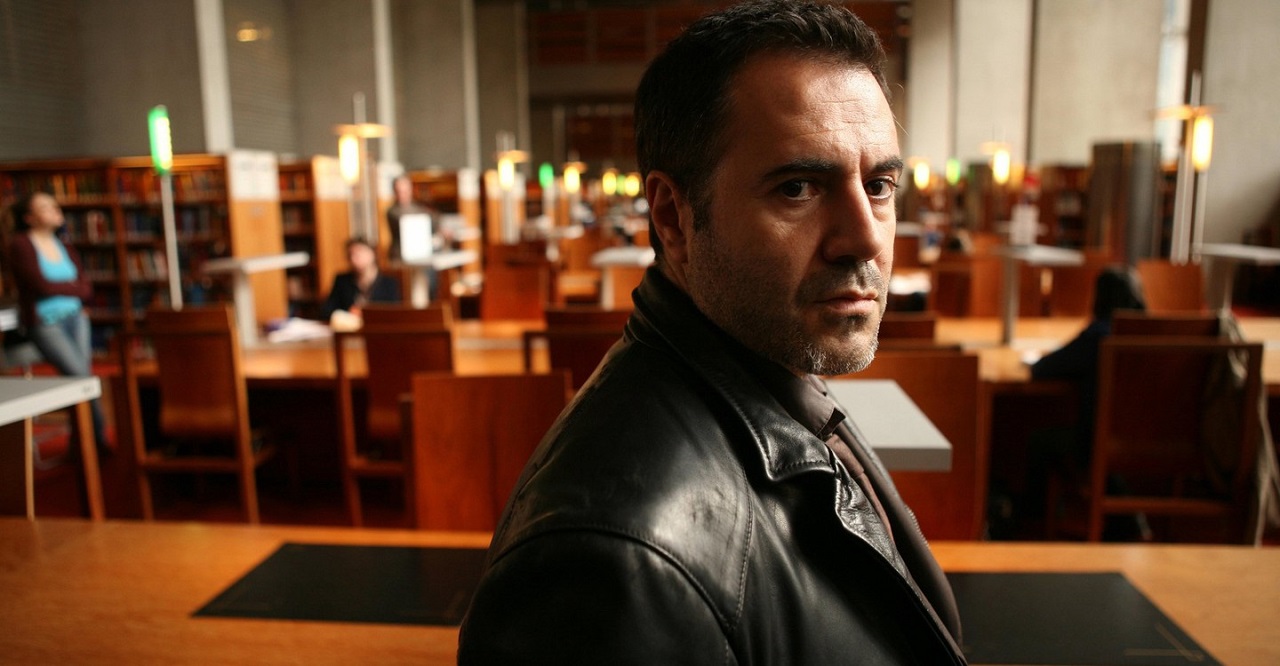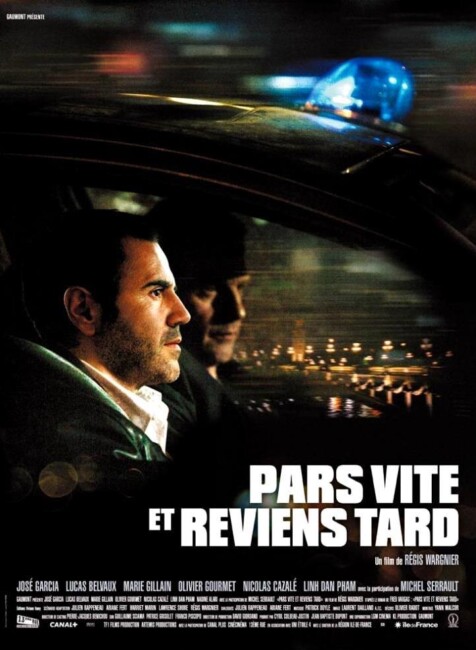aka Seeds of Death
(Pars Vite et Reviens Tard)
Crew
Director – Regis Wargnier, Screenplay Adaptation – Ariane Fert, Harriet Marin, Julien Rappaneau, Lawrence Shore & Regis Wargnier, Dialogues – Adriane Fert & Julien Rappaneau, Based on the Novel Paris Vite et Reviens Tard (2003) by Fred Vargas, Producers – Jean-Baptiste Dupont & Cyril Colbeau-Justin, Photography – Laurent Dailland, Music – Patrick Doyle, Visual Effects Supervisor – Stephanie Bidault, Special Effects Supervisor – Philippe Hubin, Production Design – Olivier Radot. Production Company – TF1 Films/KL Production/Artemis/LGM/Gaumont.
Cast
Jose Garcia (Commissaire Jean-Baptiste Adamsberg), Michel Serrault (Herve Decambrais/Herve Ducoëdic), Lucas Belvaux (Danglard), Olivier Gourmet (Joss Le Guern), Nicolas Cazale (Damas), Marie Gillain (Marie), Lin Dan Pham (Camille), Marie-Amelle Deguy (Cazalos), Nadine Alari (Clementine Heller-Dervile), Jean-Michel Noirey (Roubaud), Felicite N’Gijol (Lisbeth)
Plot
Parisian town crier Joss Le Guern receives a series of anonymous notices to be read aloud warning people of the great plague to come. At the same time, police inspector Jean-Baptiste Adamsberg investigates a number of puzzling complaints about apartment buildings around the city where every door but one in the building has been painted with a reversed number four. Research shows that the reversed four is a symbol that was used in the Middle Ages to protect houses from the bubonic plague. The inhabitants of the unmarked apartments then start to come down with outbreaks of the plague. Adamsberg discovers that each of the people has been sent an envelope containing plague-infected fleas and that someone has broken in, stripped the bodies and drawn on them in charcoal. As his own partner becomes accidentally infected and press-fuelled panic about a plague outbreak grows, Adamsberg tries to catch the mysterious hooded figure behind the attacks.
This French thriller certainly hooked me with its quite fantastical-sounding premise – a town crier starts reading out a series of notices written in the tones of Biblical pronouncement that predict the return of the Black Death. At the same time, a series of arcane symbols that turn out to be mediaeval ones for passover start appearing around town, painted on all the doors in an apartment building except one – after which the inhabitants of the unmarked apartments come down with the plague. It is a fascinating set-up for a film.
Alas, the disappointment of Have Mercy On Us All/Seeds of Death is that it ends up gradually winnowing its fantastical premise down to something disappointingly mundane. The effect is not unakin to films of the 1930s like Mark of the Vampire (1935) or The Beast with Five Fingers (1946), which started out with incredibly atmospheric and wildly fantastical ideas but ended up reducing them to improbably contrived mundane resolutions.
Moreover, the initial set up of the town crier and his pronouncements has nothing to do with the story that follows. The town crier (Olivier Gourmet) starts out being wound in as a principal character but it is not long before he is sidelined altogether. In writing terms, this is what is called a hook – an opening paragraph, sentence or first page that grabs a reader’s curiosity or attention to keep them there for the ensuing chapters. Even after this is revealed to be a hook, Have Mercy On Us All/Seeds of Death still has the highly intriguing premise of a killer who is wandering Paris infecting victims by sending them envelopes of Bubonic Plague infested fleas and then stripping their bodies and painting them with charcoal.
We seem to be in the midst of one of the more colourfully extravagant copies of a serial killer thriller a la Se7en (1995) with a killer using the Black Death rather than the Seven Deadly Sins as a motif. (Although, if anything, Have Mercy On Us All/Seeds of Death starts to feel more like the Biblical Plagues-themed revenge scheme of The Abominable Dr Phibes (1971), albeit played seriously). When it comes to the scenes of detective Jose Garcia pursuing the black-hooded figure across the rooftops, Have Mercy On Us All almost seems like a Se7en-styled film crossbred with the serial adventures of Louis Feuillade.

However, Have Mercy On Us All/Seeds of Death entirely wastes its premise. [PLOT SPOILERS]. The Black Death themed killings are mundanely revealed to be an improbable scheme that someone has devised as a means of taking revenge on the seven parties responsible for the death of their father. There is no particular reason offered as to why the killer used the bubonic plague other than that he is a classical scholar. (Or even where in the modern day he would obtain samples of a disease that humanity has eradicated. Not to mention why there should be a panic when any modern outbreak would readily be dealt with by antibiotic treatment). There is a further twist where it is revealed that the killer’s sister decided to daub the bodies in black charcoal so that she could steal the brother’s inheritance after he was convicted.
By the point of this revelation, the plot has entered the realms of the preposterously contrived and most of the audience ended up groaning in disbelief. Which is a shame, as had Have Mercy On Us All/Seeds of Death stayed with the more fantastical elements, it could have created an unworldly classic. As it is, the detective thriller’s need to impose a rational explanation on things, no matter how bizarrely contrived, causes everything to collapse into plotting implausibility.
Elsewhere, director Regis Wargnier is usually known for historical-dramatic works such as Indochine (1992) and East-West (1999). Of semi-interest here is his first film I’m the King of the Castle (1989) about the cruel psychological games played between two boys.
The film is adapted from Paris Vite et Reviens Tard (English: Have Mercy On Us All (2003), a novel by woman writer Fred Vargas, who is one of the world’s leading experts on the epidemiology of the Black Death, who has also written more than a dozen crime novels, many of them featuring her detective hero Commissaire Adamsberg.


